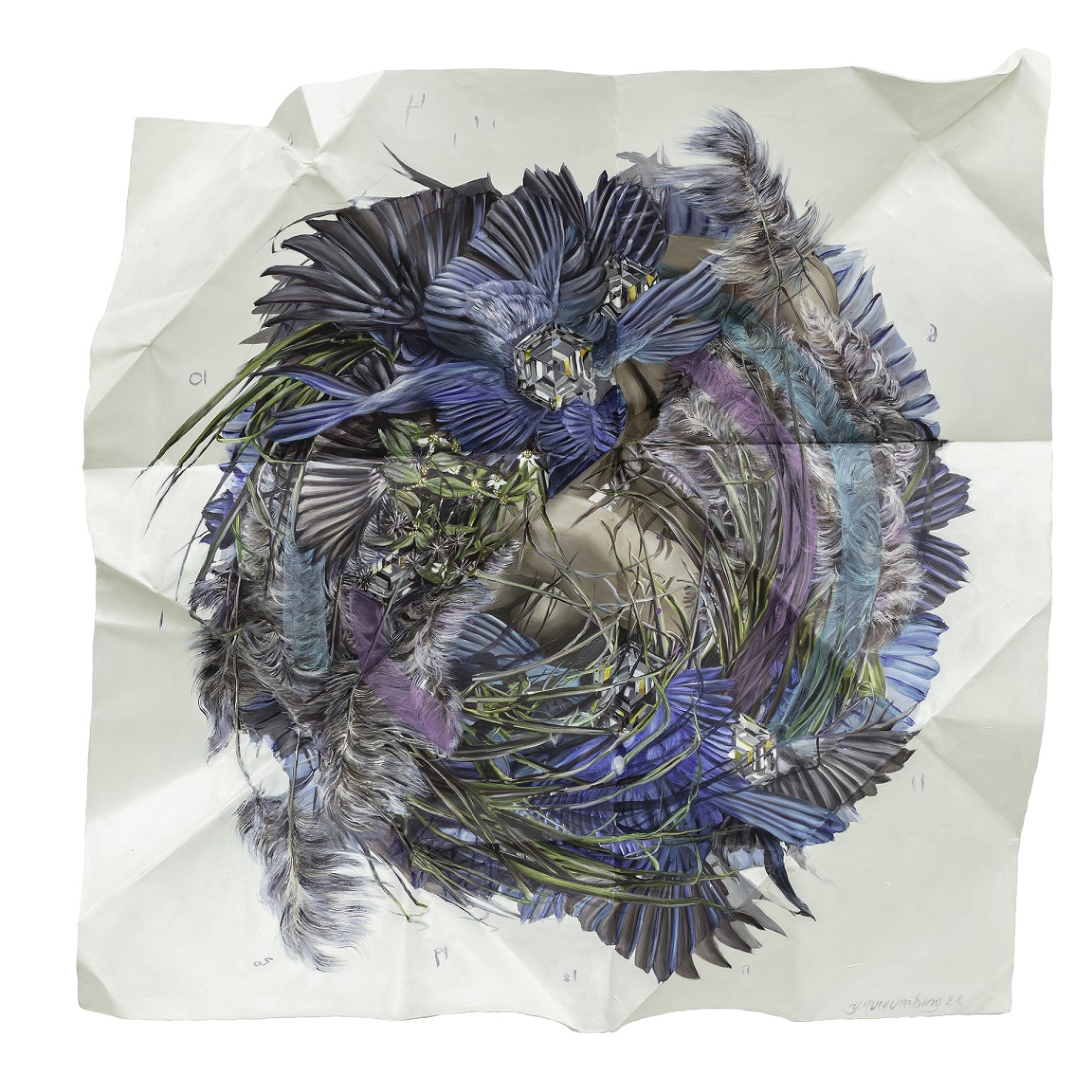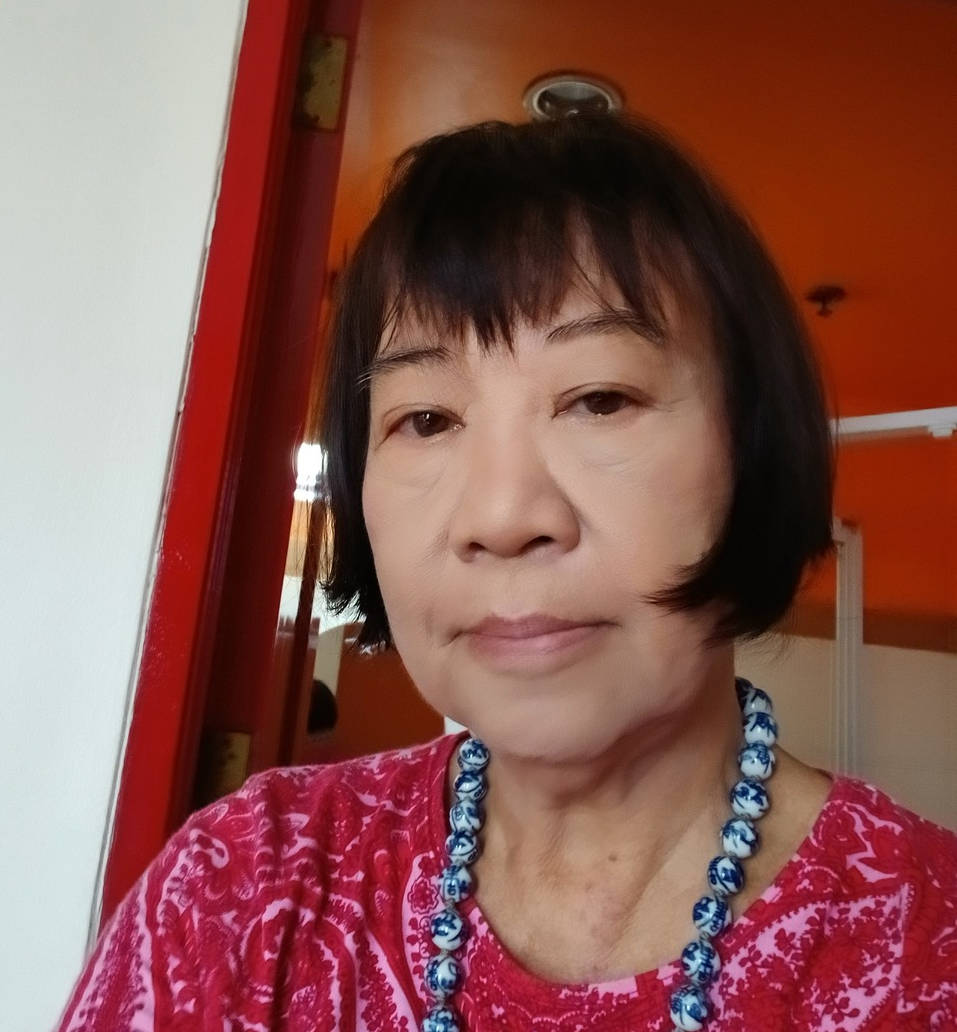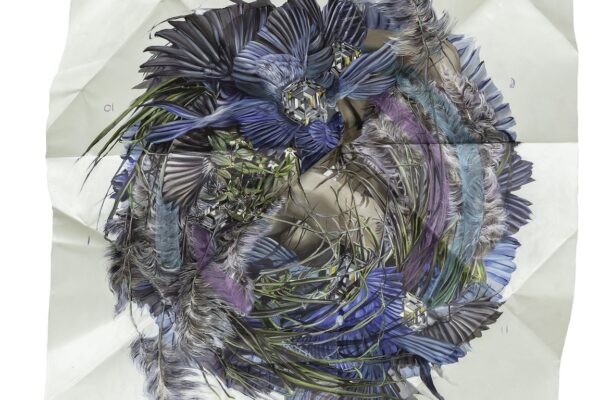
Yvonne Quisumbing’s exhibit titled Sanctuary until Feb. 5 at Silverlens Galleries, Makati features medicinal plants that grow abundantly in a farmland in Barangay Lugo, Borbon, Cebu. It is a sanctuary for birds as well as for the artist in the last 15 years.
In the exhibit, each painting is an intricate assemblage of wreaths with layers of healing plants, wild flowers, tiny fruits or berries, and bird feathers; some wreaths contain small hexagonal glass crystals like charms; some works offer a glimpse of arms and hands that evoke the care, sweat, and labor of farmers working the land who remain the poorest and the most neglected of Filipinos. Unable to afford anything, they rely on the traditional healing power of these plants.
Each of the nine paintings on an aluminum base, created in 2024, is named after a medicinal plant, bird, or fowl that inhabits the area: Tikarol, Euphorbia, Gallus, Integrifolia, Damohiya, Royal, Ultra, Agonoy, and Tigaw. The titles refer to herbal plants such as damohiya or makahiya in Tagalog, the mimosa plant; Euphorbia or tawa-tawa in Tagalog; Hagonoy or Siam weed; and Tigaw or Malabar hoary.
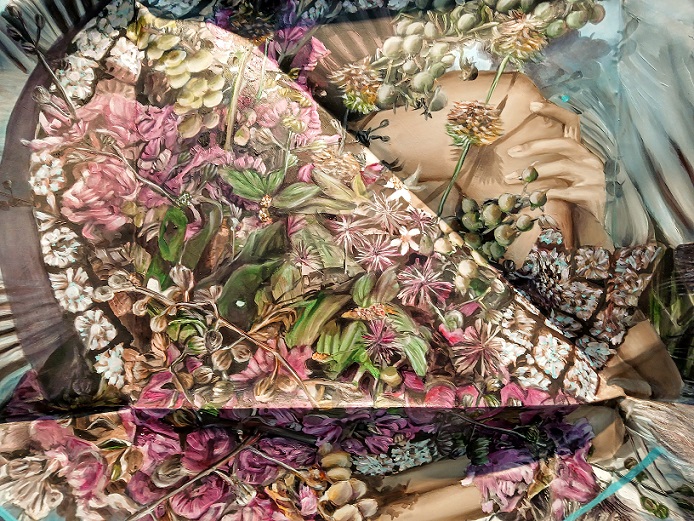
Locals in the area drink tea brewed with tigaw leaves and roots to ease their body aches and pains; make a poultice of crushed hagonoy leaves to treat their wounds; or drink tea boiled and strained from a manggagaw (Euphorbia) plant to treat dengue.
Only one painting titled Tikarol features a foreign plant, the snapdragon with its bright colored flowers in bloom but its petals dry up like skulls. For Quisumbing, Tikarol serves as memento mori, a reminder of the end of sugarcane farming in the area. The painting also depicts the deep blue wings of the tikarol or white collared kingfisher, a bird that frequents the area. With its deep blue color unfading, the bird represents the perseverance of northern Cebu farmers.
Vanishing sugarland
In face of the decreasing land planted to sugarcane and the closure of two sugar mills in the area, farmers and workers lead a most precarious existence. Quisumbing views the medicinal plants as symbols of hope that will revitalize the land.
The plight of farmers in Lugo mirrors the conditions of farmers across the archipelago as they bear the heaviest of burden amidst rising production costs, environmental destruction, and the effects of climate change.
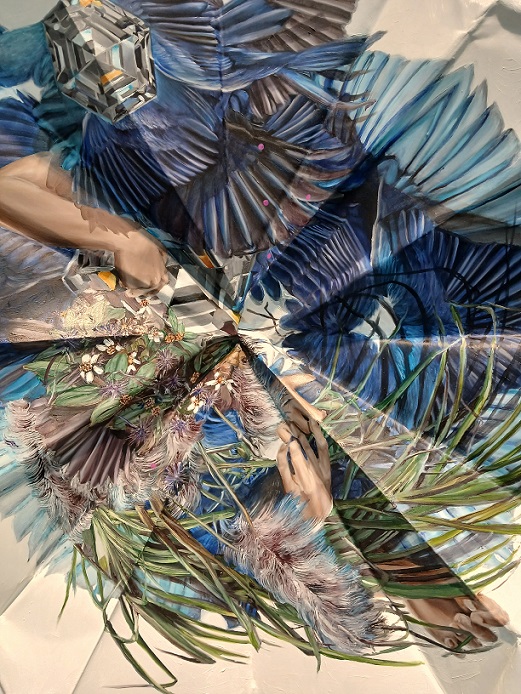
As voiced out in Quisumbing’s poem, the exhibit is her own way of expressing “A gratitude. A petition. A prayer. Meticulously drawn reflecting on this gift: a sanctuary of herbs and birds.” It is also “…a wreath folded, kept near the thud of my heartbeat for this field to never cease to heal and mother….” The poem ends with a plea, “I do beseech and plea: our home, this stone beneath our feet, remains.”
Quisumbing uses industrial materials like aluminum and fiber glass for her work; moreover, she reshapes, folds, or crumples the base material, and paints meticulously on the surface, giving them a sculptural and geometric dimension.
Apothecary series
The Sanctuary exhibit continues Quisumbing’s Apothecary series that started in 2018. It explores Philippine medicinal plants inspired by the book Medicinal Plants of the Philippines (1951) by Dr. Eduardo Quisumbing., her father’s uncle. The book is a taxonomy of more than 800 medicinal plants in the country.
The first Apothecary series included portraits of seven human afflictions with its corresponding healing plants fashioned as masks. The second one, Apothecary Prelude, explored women’s ailments during conception, birth, and postpartum stages, clothed in symbols of decay and decomposition. Its geometrical surface is patterned after labid, a precolonial Visayan snake tattoo pattern.
DOH herbals
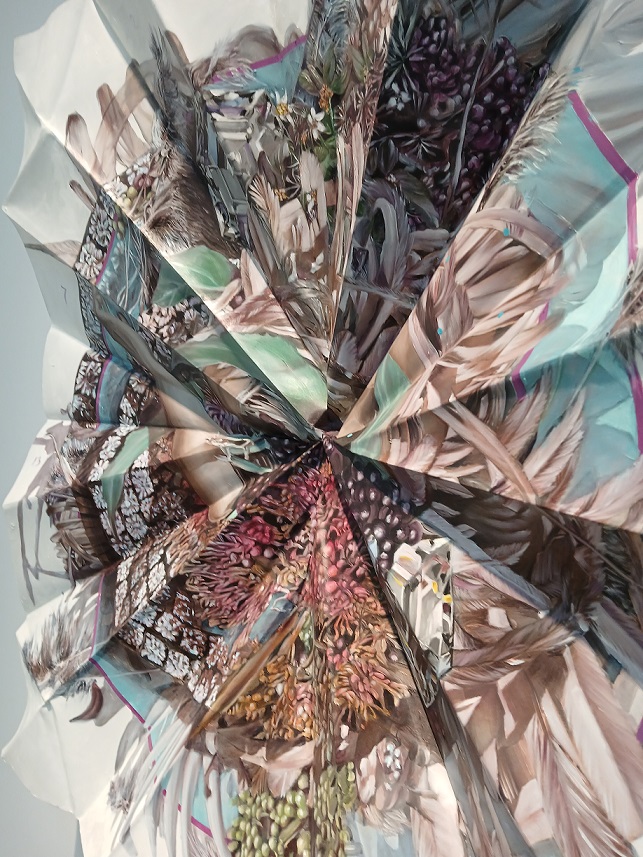
Many medicines are natural products or derived from natural products. The Department of Health (DOH) has a list of 10 medicinal plants validated scientifically in 1992. They include akapulko, ampalaya, bawang, bayabas, lagundi, niyug-niyogan, sambong, tsaang gubat, ulasimang bato, and yerba buena.
People use these medicinal plants as alternative and first aid medicines. Garlic is used for treating cuts or wounds; sambong or nagal camphor for kidney problems; akapulko or ringworm bush for skin diseases; yerba buena or spear mint with oregano for anti-asthmatic effects; tsaang-gubat or scorpion bush for allergic rhinitis; ampalaya or bitter melon for its antidiabetic effects; ulasimang bato/pansit-pansitan or silver bush for gout and rheumatism; bayabas or guava for wounds; niyug-niyogan or rangoon creeper for parasitic intestinal worms, and lagundi or five-leaved chaste tree for cough and asthma.
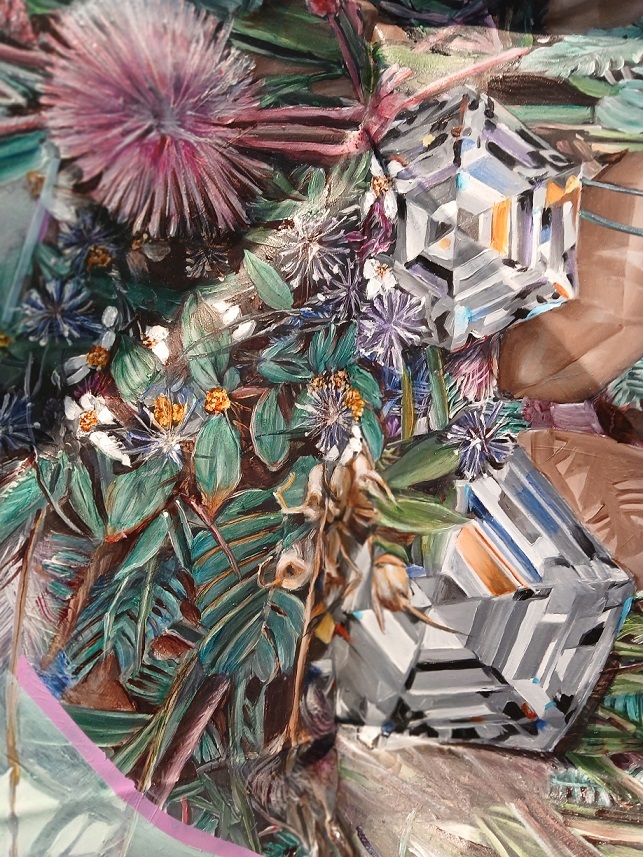
Yvonne Quisumbing (b. 1975, Cebu)
She has a BA in fashion design and merchandising from De La Salle University of St. Benilde, Manila and a master in fine arts from the University of Santo Tomas.
In the field of fashion, she was the country representative at the Concours de Jeunes Creatur de Mode in Paris, 2001 and 2005; and won the grand prize in the Philippine Fashion and Design Competition for Apparel, 2001, and Accessories, 2005.
